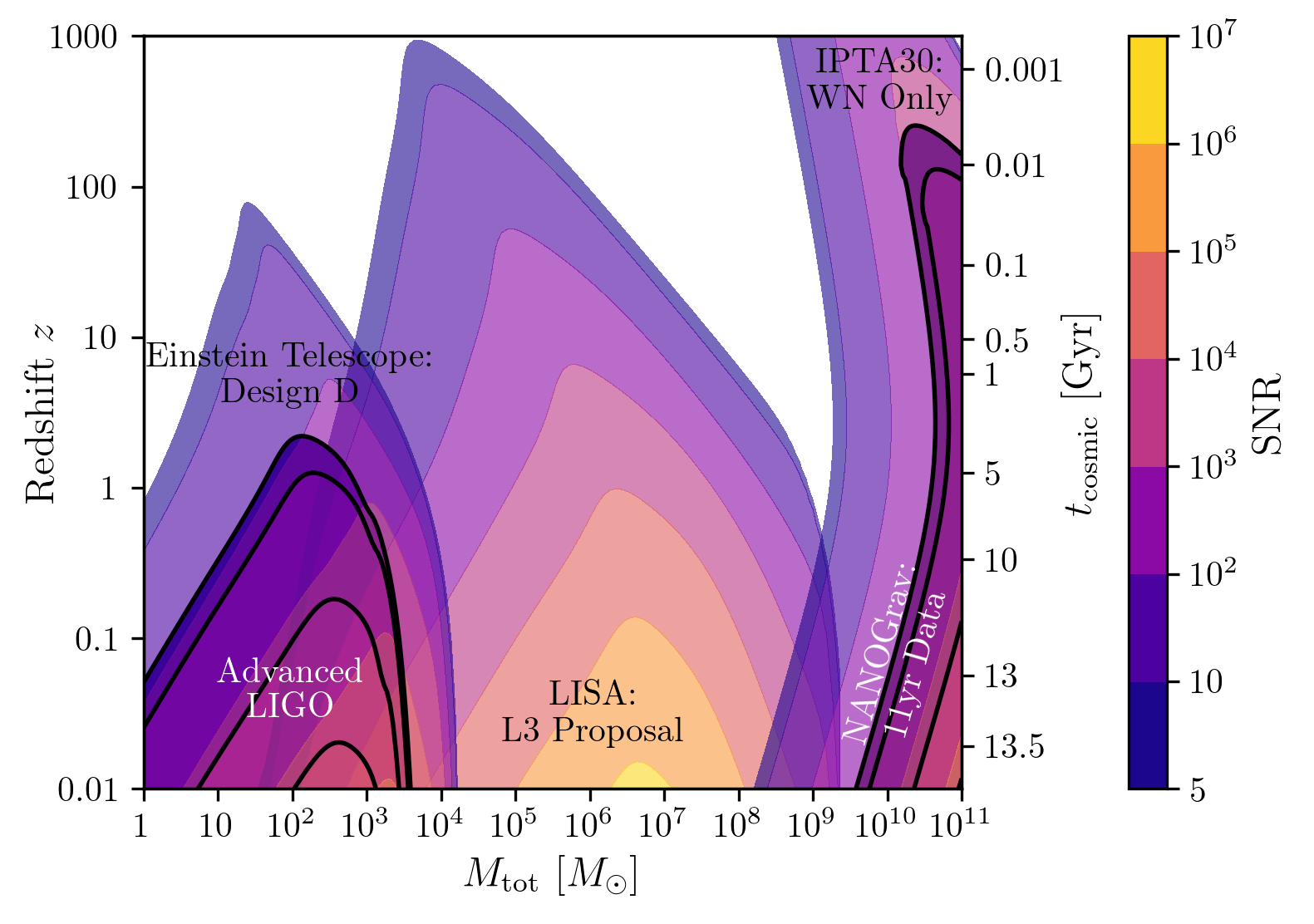
Gravitational Wave dEtector desigN Toolkit.
Generates strain sensitivity curves and Waterfall plots for various gravitational wave detector designs.
- Free software: MIT license
- Documentation: https://gwent.readthedocs.io.
Calculates the sensitivity curves for various designs of pulsar timing arrays, space-based detectors, and ground-based detectors. This includes:
- NANOGrav
- SKA
- LISA
- aLIGO
- Voyager
- and more!
Calculates the strain from coalescing black hole binaries. It contains functionality for different source descriptions:
- Slowly-evolving sources, ie. BHBs early in their inspiral where they appear to not change in frequency.
- Rapidly-evolving sources, ie. BHBs in the final stages of coalescence.
- Uses a fully Pythonic implementation of the phenomenological model
IMRPhenomDto accurately represent the inspiral, merger, and ringdown of the BHB.
- Uses a fully Pythonic implementation of the phenomenological model
Calculates the matched-filtered signal-to-noise ratio (SNR) to help assess the detectability of any BHB source configuration by any represented gravitational wave detector.
- Includes robust plotting methods to represent these SNRs.
gwent is available on the Python Package Inventory, so the preferred method to install gwent is to install it with pip, as it will always install the most recent stable release.
$ pip install gwentIf you are looking for quick data, we conveniently place the figure above in the data folder on the Github repo. There you can also find the raw data used for this figure in .npz format. To load this data, simply use np.load(filename), and the data can be accessed by the kwargs 'mass', 'redshift', and 'snr'. E.g.,
import numpy as np
import gwent
from gwent.snrplot import Plot_SNR
loaded_file = np.load(filename)
Plot_SNR('M',load_file['mass'],'z',load_file['redshift'],load_file['snr'])This work and methodology is available on arXiv. If you use gwent, please cite this work using the following:
@ARTICLE{Kaiser:2021,
doi = {10.1088/1361-6382/abd4f6},
url = {https://doi.org/10.1088/1361-6382/abd4f6},
year = 2021,
month = {jan},
publisher = {{IOP} Publishing},
volume = {38},
number = {5},
pages = {055009},
author = {A R Kaiser and S T McWilliams},
title = {Sensitivity of present and future detectors across the black-hole binary gravitational wave spectrum},
journal = {Classical and Quantum Gravity},
eprint = {2010.02135},
adsurl = {https://ui.adsabs.harvard.edu/abs/2020arXiv201002135K},
adsnote = {Provided by the SAO/NASA Astrophysics Data System}
}We utilize and include within the package a specific commit of pygwinc found at https://git.ligo.org/gwinc/pygwinc to create many of the ground-based gravitational wave detector sensitivity curves. At the time of creation, there is no pygwinc availability on PyPI, so we explicitly include the necessary portions of the code within.
This package was created with Cookiecutter and the audreyr/cookiecutter-pypackage project template.
